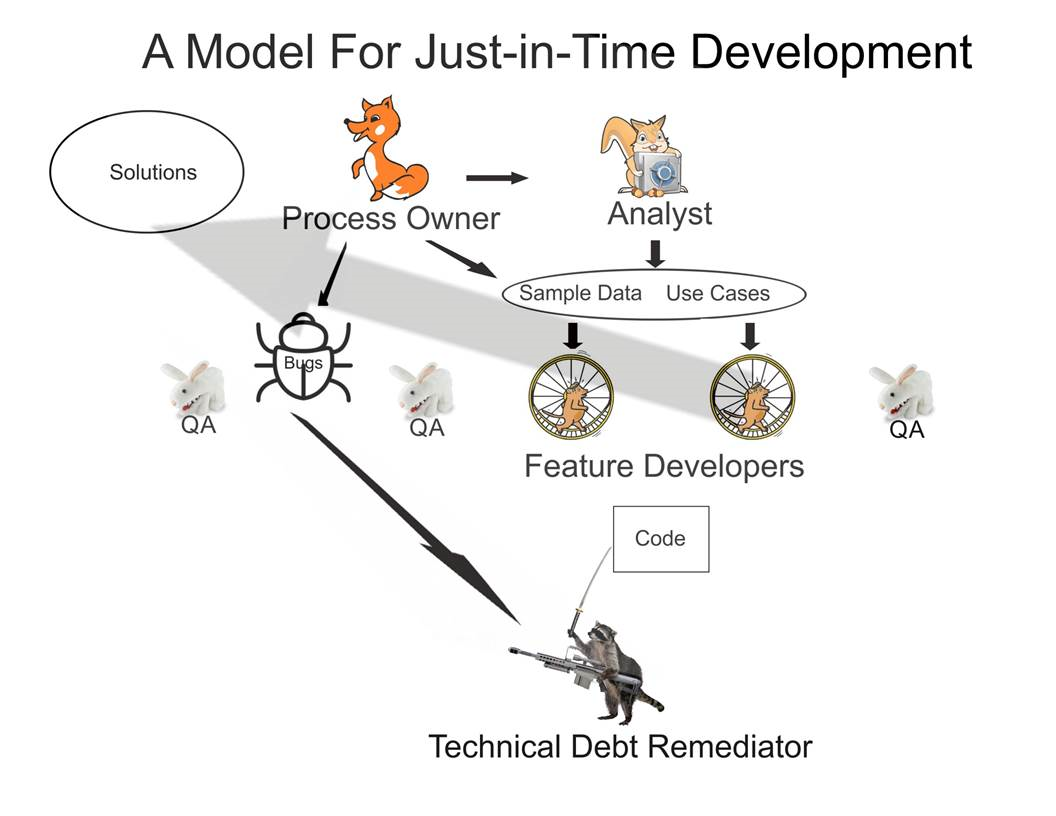Just-In-Time Development
Technical Debt Remediator
Goals
- Improve Quality
- Reduce Viscosity for Future Development Efforts
- Resource for Developer and Analyst Understanding of Custom Solutions Eco System
- Decrease Drag of Custom Development on Vendor Supplied Solutions
- Emphasize Maintainability
Responsibilities
- Code Review
- Bug Triage and Fighting Bugs for not Actively Developed Projects
- Refactoring to Patterns
- Elimination of Code
- Creation of Shared Code Objects or Reusability Strategies
- Converging on Common Architecture
- Defines Infrastructure Requirements
- Documentation, Including Articulation of Systems/Applications/Services and Ownership
- Authoritative understanding of all Custom Applications
- Application Lifecycle Management (ALM) Development Tool s Owner: Development/Testing/Bug Tracking/Metrics
- Understanding Bridges between Vendor Provided Solutions and Custom Solutions
- Minimizing Debt and Remediation Impact to Active Development
Does Not Include
- Determining Upstream Development Methodology
- Creation of Specification or Use Cases
- Manual Testing or QA
- New Development
- Managing or Reviewing Actively Maintained External Contracts or Vendor Provided Systems

Background
Whether we use the term Backlog, or the more ominous term Technical Debt, the proposition is that a growing ecosystem of custom solutions should have a component at the back end and not just at the top of the development cycle. This premise depends on the acceptance of the Refactoring to Patterns approach to software development. It would add sanity to a too lean team. It guarantees that the many aspects of quality that are indirect and not visible to the business are given attention. In an environment with lots of legacy code produced without methodology or maintenance strategy this is an alternative to top down strategic obsolescence.